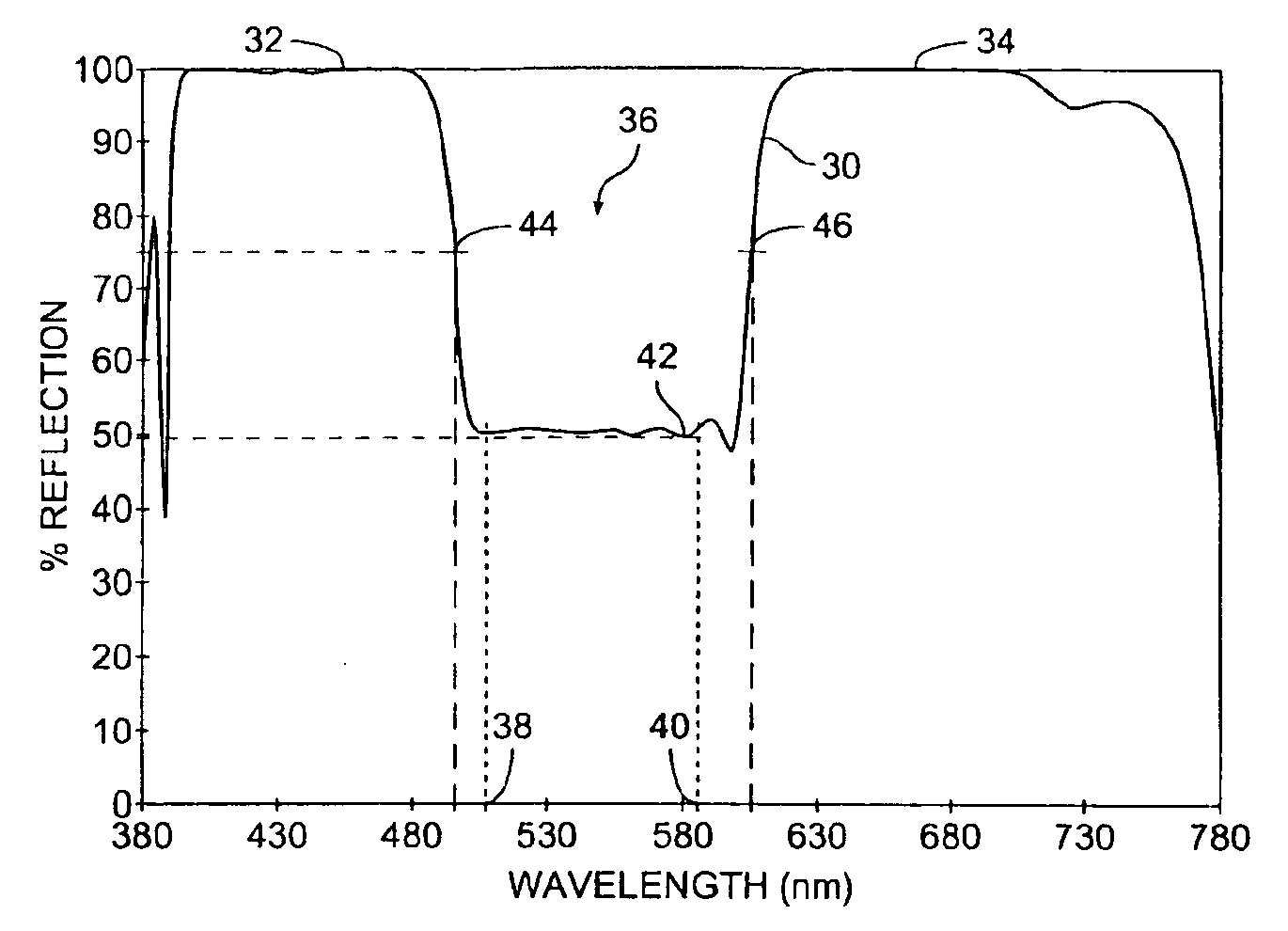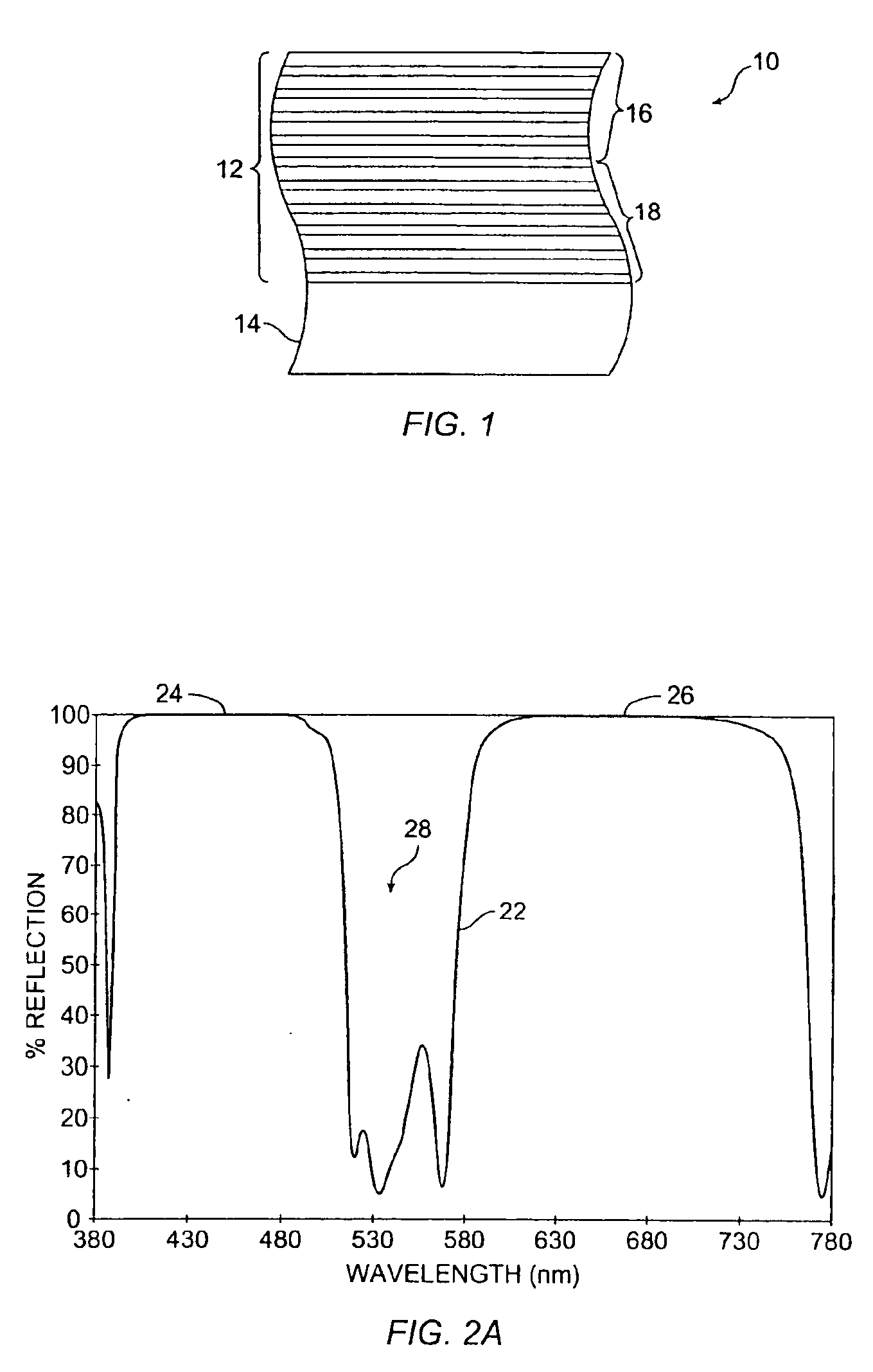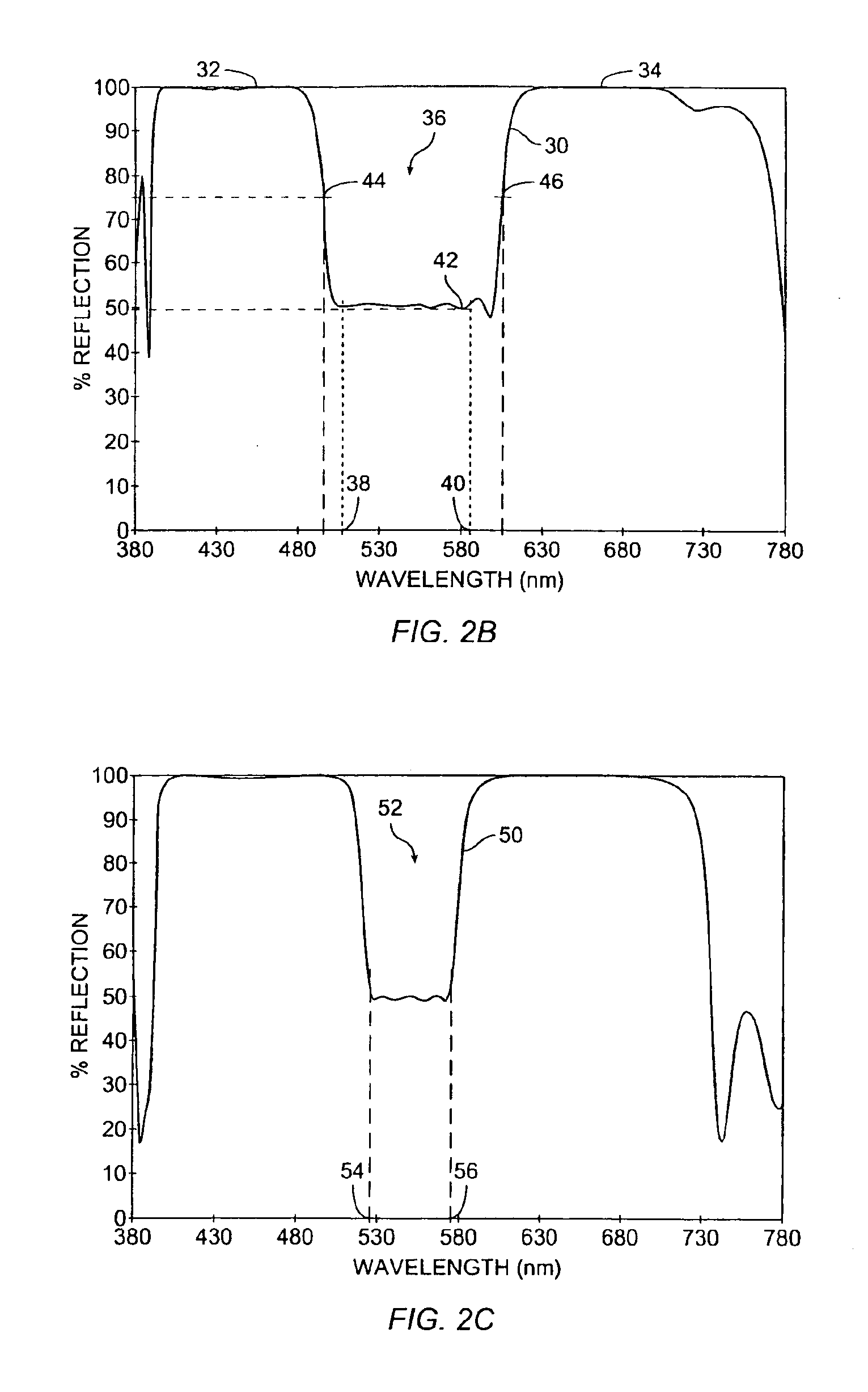Dichroic neutral density optical filter
a neutral density, optical filter technology, applied in the field of optical filters, can solve the problems of glass becoming undesiredly heavy and/or bulky, and affecting the performance of the optical filter
- Summary
- Abstract
- Description
- Claims
- Application Information
AI Technical Summary
Benefits of technology
Problems solved by technology
Method used
Image
Examples
Embodiment Construction
I. Introduction
A thin-film dielectric dichroic ND filter provides selected attenuation over a relatively wide range of wavelengths. Since the ND filter is a dichroic filter, essentially all of the light is reflected or transmitted, avoiding heating of the filter when used in a high-flux application, and allowing the non-transmitted light to be used for other purposes. For example, a dichroic ND filter could be used to sample the light output of a lamp over a relatively wide area in a high-flux application without removing significant light from the system or generating heat in the NT) filter.
Reflective dichroic filters can be bandstop filters, which reflect light over a wavelength band, or edgestop filters, which reflect light having wavelengths above (“short pass”) or below (“long pass”) a band edge. In other words, a dichroic bandstop filter generally transmits (passes) light outside of the reflective band, a dichroic short pass edgestop filter transmits light having shorter wavel...
PUM
 Login to View More
Login to View More Abstract
Description
Claims
Application Information
 Login to View More
Login to View More - R&D
- Intellectual Property
- Life Sciences
- Materials
- Tech Scout
- Unparalleled Data Quality
- Higher Quality Content
- 60% Fewer Hallucinations
Browse by: Latest US Patents, China's latest patents, Technical Efficacy Thesaurus, Application Domain, Technology Topic, Popular Technical Reports.
© 2025 PatSnap. All rights reserved.Legal|Privacy policy|Modern Slavery Act Transparency Statement|Sitemap|About US| Contact US: help@patsnap.com



